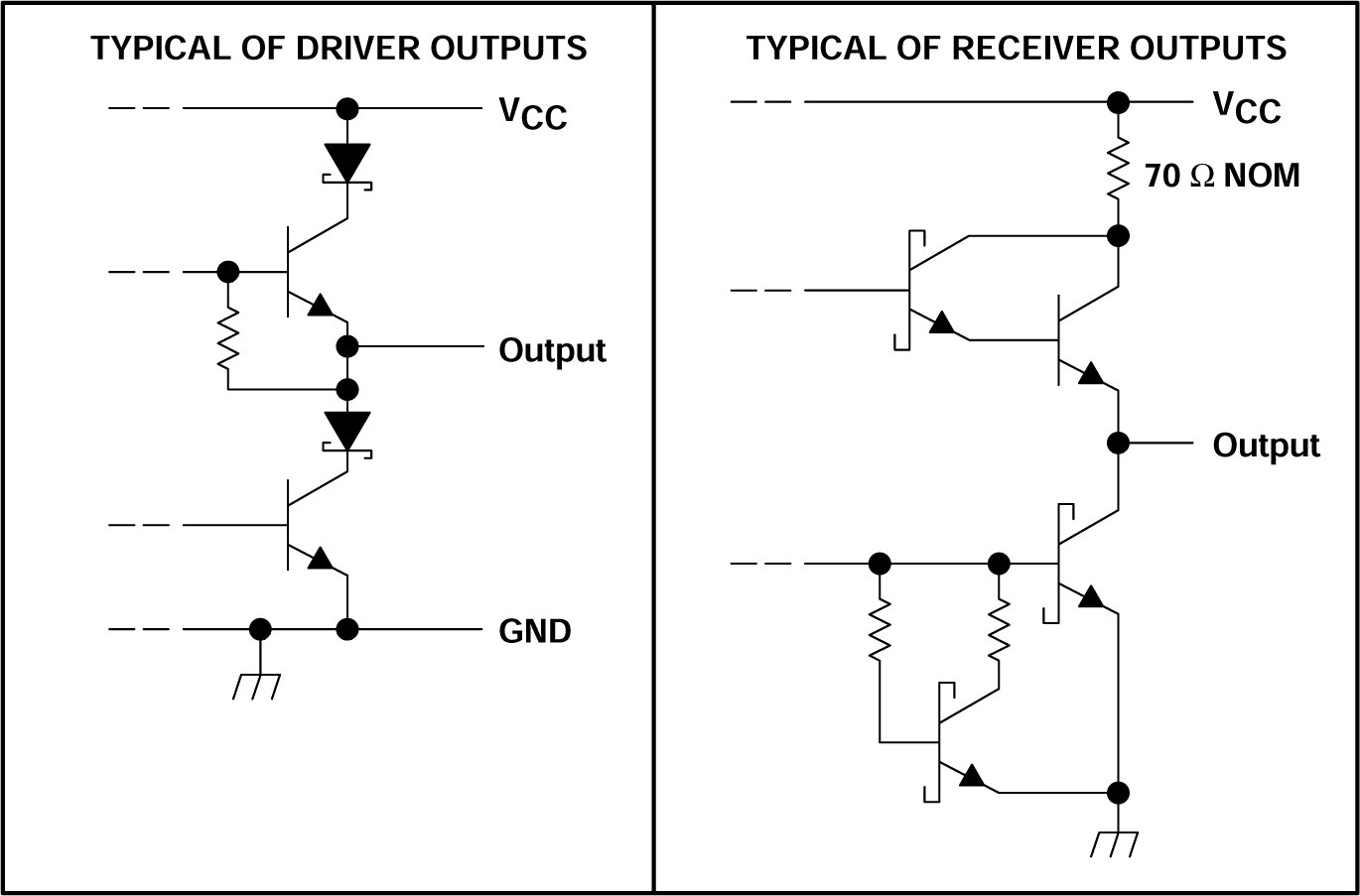SLLS154C March 1993 – February 2024 SN75ALS1177 , SN75ALS1178
PRODUCTION DATA
- 1
- 1 Features
- 2 Applications
- 3 Description
- 4 Pin Configuration and Functions
- 5 Specifications
- 6 Parameter Measurement Information
- 7 Detailed Description
- 8 Device and Documentation Support
- 9 Revision History
- 10Mechanical, Packaging, and Orderable Information
Package Options
Refer to the PDF data sheet for device specific package drawings
Mechanical Data (Package|Pins)
- NS|16
- N|16
Thermal pad, mechanical data (Package|Pins)
Orderable Information
7.1 Device Functional Modes
Table 7-1 SN75ALS1177, SN75ALS1178 Functional Table (Each Driver)
| INPUT D | ENABLE DE | OUTPUTS(1) | |
|---|---|---|---|
| Y | Z | ||
| H | H | H | L |
| L | H | L | H |
| X | L | Z | Z |
Table 7-2 SN75ALS1177 Functional Table (Each Receiver)
| DIFFERENTIAL A–B | ENABLE RE(1) | OUTPUT Y(1) |
|---|---|---|
| VID ≥ 0.2V | L | H |
| –0.2 V < VID < 0.2V | L | ? |
| VID ≤ –0.2V | L | L |
| X | H | Z |
| Open | L | H |
Table 7-3 SN75ALS1178 Functional Table (Each Receiver)
| DIFFERENTIAL A–B | OUTPUT Y(1) |
|---|---|
| VID ≥ 0.2V | H |
| –0.2 V < VID < 0.2V | ? |
| VID ≤ –0.2V | L |
| Open | H |
(1) H = High level, L = Low level, ? = Indeterminate, X = Irrelevant, Z = High impedance (off)
 Figure 7-1 Equivalent Schematics
Figure 7-1 Equivalent Schematics Figure 7-2 Schematics of Outputs
Figure 7-2 Schematics of Outputs